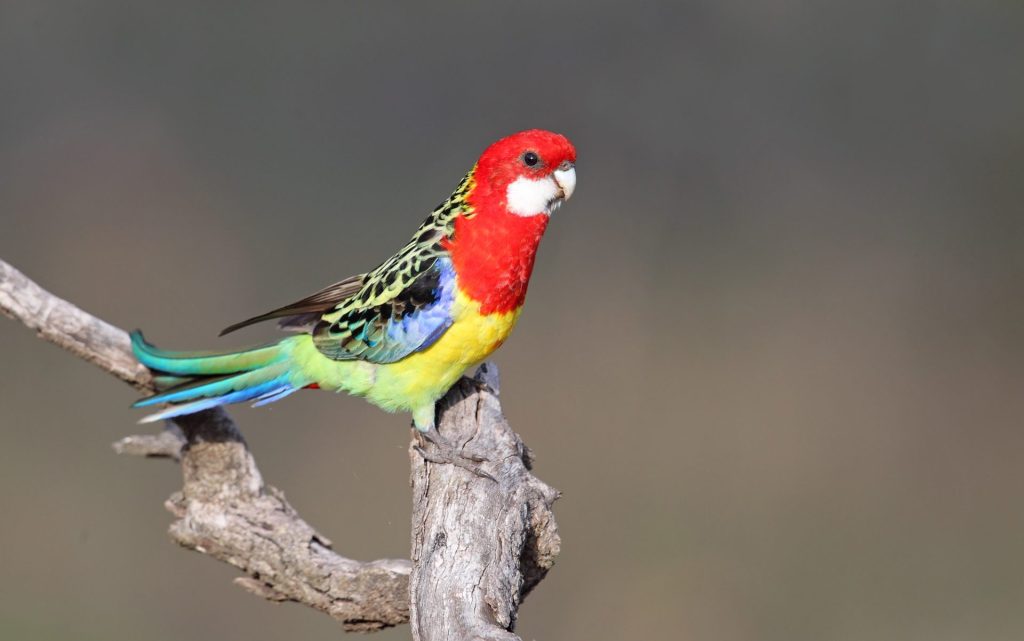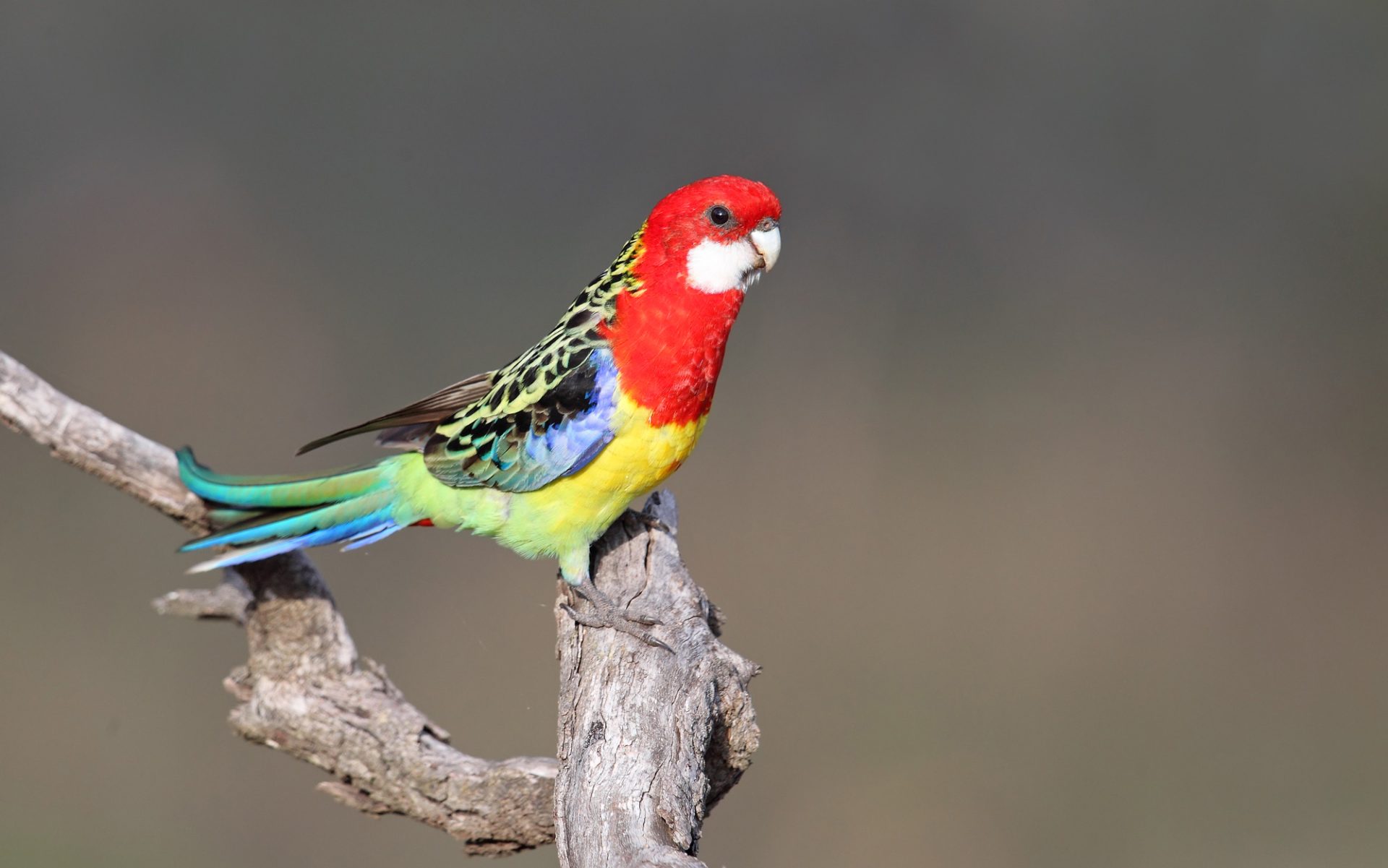By Ian Davidson and Chris Tzaros – Wangaratta Landcare & Sustainability
One of our most commonly seen and widespread parrots is the Eastern Rosella, and it is arguably one of Australia’s most beautiful birds. The plumage of the Eastern Rosella is especially vivid — red, yellow, blue, green and black. Despite this bold coloration, when rosellas are feeding on the ground among the grass or perched among the foliage in the tree-tops they can be very difficult to see, often seeming to disappear completely into the background. Despite their bright colours, their plumage is patterned so that it creates an extremely effective camouflage which assists the birds in avoiding detection by potential predators.
Eastern Rosellas are medium-sized colourful parrots with distinctive white cheek patches. They have a red head, neck and breast, with yellowish to greenish upper parts, a yellow underbody and a yellow-green to blue-green rump, with a red undertail. The shoulders are bright blue. Females are usually similar to males, but sometimes duller and young birds are also duller and are aged by their bill colour, which is yellow or orange, changing to off-white when mature.
The Eastern Rosella is found throughout south-eastern Australia, from Queensland to Victoria and south-eastern South Australia and also in eastern Tasmania. One of the reasons the Eastern Rosella is common locally is that it can be found in open woodlands, grasslands, farmlands and remnant bushland, habitats that are common in North East Victoria. They also frequent urban habitats such as parks, gardens and golf courses where trees with hollows exist.
The Eastern Rosellas usually feed on the ground, especially amongst grasses in lawns, pastures and other clearings, but also feed in trees and bushes. Their diet includes seeds, fruits, buds, flowers, nectar and insects.
Eastern Rosellas mate for life. The female chooses and prepares the nesting site, usually a hollow in a eucalypt tree (but will sometimes use a nest-box or other artificial site). Eggs are laid on a decayed wood bed in a tree hollow and the female incubates the eggs while the male regularly feeds her. The young may be fed for a while after they fledge.
Next time you see an Eastern Rosella take the time to observe it closely, the use of binoculars is best, to appreciate their amazing plumage.


